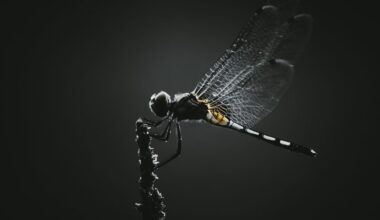The anaconda, with its immense size and powerful coils, has captured human imagination for centuries. Often portrayed as monstrous predators in movies and folklore, these aquatic giants are shrouded in mystery. But beyond the sensationalized image lies a complex and fascinating creature with unique adaptations and surprising behaviors. Let’s shed light on some intriguing facts about anacondas:
Giants of the Serpent World
While the reticulated python holds the record for length, the green anaconda reigns supreme in weight and overall mass. Reaching up to 30 feet long and weighing in at a staggering 500 pounds, these behemoths are truly awe-inspiring. Their muscular bodies and powerful constricting grip make them apex predators in their South American domain.
Queens Rule the Kingdom
In the anaconda world, females rule the roost. Sexually dimorphic, meaning males are significantly smaller than females, these giantesses are independent and fiercely territorial. Males, drawn to the pheromones of a fertile female, engage in a fascinating “breeding ball” ritual, with numerous males vying for mating rights.
Masters of Aquatic Ambush
Anacondas are not constrictors in the traditional sense. Unlike boas that squeeze their prey to suffocate, anacondas use their immense strength to constrict blood flow and crush internal organs, leading to cardiac arrest. This adaptation, coupled with their excellent underwater vision and heat-sensing pits, makes them stealthy ambush predators in their aquatic habitats.
Livebearers, Not Egg-layers
Unlike most snakes, anacondas are ovoviviparous, meaning they give birth to live young. A single female can produce a litter of up to 100 live young, each around two feet long. These remarkable mothers exhibit parental care, staying coiled around their offspring for several weeks, offering protection from predators.

Masters of Sensory Perception
Despite lacking eyelids, anacondas have excellent vision thanks to transparent protective scales over their eyes. Additionally, their heat-sensing pits located on their upper lip allow them to detect warm-blooded prey even in murky waters. This combination of visual and thermal perception makes them efficient hunters in their low-light environment.
Solitary Stalkers, Not Pack Hunters
Contrary to popular belief, anacondas are solitary creatures, only coming together during the breeding season. They spend their days basking on rocks or submerged in water, waiting for unsuspecting prey to wander by. Their solitary nature and secretive lifestyle contribute to the mystique surrounding these giants.
Not Just Jaws, But Powerful Teeth
While constriction is their primary hunting strategy, anacondas also possess sharp, backward-curving teeth. These teeth help them grip onto struggling prey and prevent escape. The flexible jaw joint allows them to swallow animals much larger than their head diameter, living up to their reputation as formidable predators.
A Diverse Family of Giants
Though the green anaconda steals the spotlight, there are four recognized species of anacondas, each with unique characteristics. The yellow anaconda, the smallest of the group, inhabits savannas and grasslands. The Bolivian anaconda, found in the foothills of the Andes, is semi-aquatic and preys on amphibians and rodents. The black anaconda, known for its dark coloration, primarily inhabits flooded forests and swamps.
Not Just Monsters, But Important Ecosystem Components
Despite their fearsome reputation, anacondas play a crucial role in maintaining healthy ecosystems. By preying on rodents, caimans, and other animals, they help control populations and maintain ecological balance. Their presence also indicates a healthy environment with abundant prey sources.
Conservation Concerns and Sustainable Future
While currently classified as “Least Concern” by the IUCN, some anaconda species face habitat loss and human persecution. Threats like deforestation, water pollution, and illegal pet trade endanger their populations. Conservation efforts focused on habitat protection, sustainable practices, and education are crucial to ensure the survival of these fascinating creatures.
By understanding these remarkable facts, we can appreciate the anaconda beyond its sensationalized image and recognize its unique role in the intricate web of life. Through responsible actions and conservation efforts, we can ensure that these enigmatic giants continue to thrive for generations to come.










